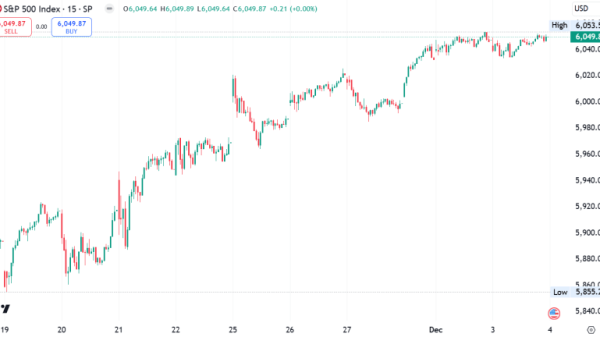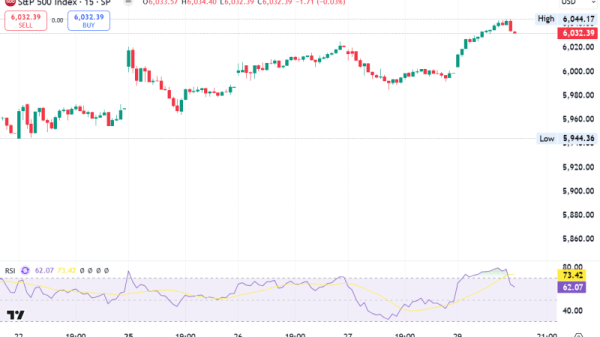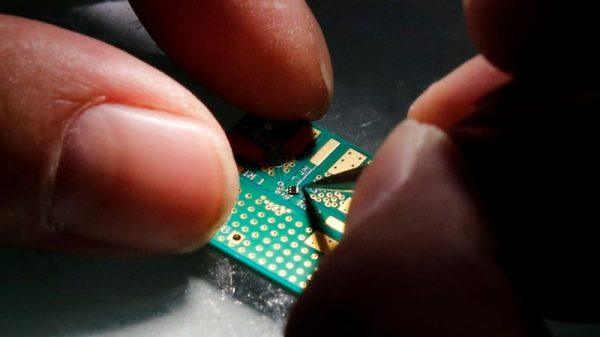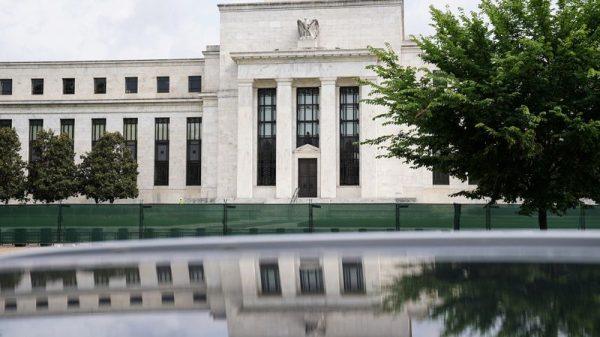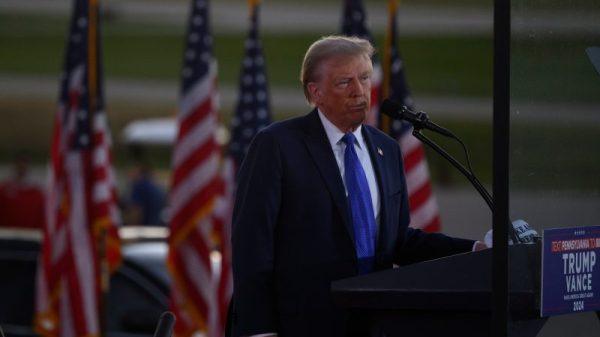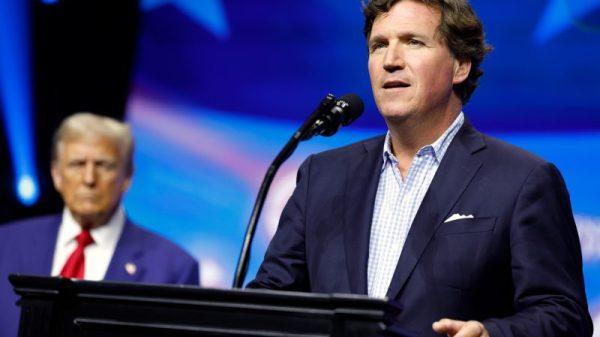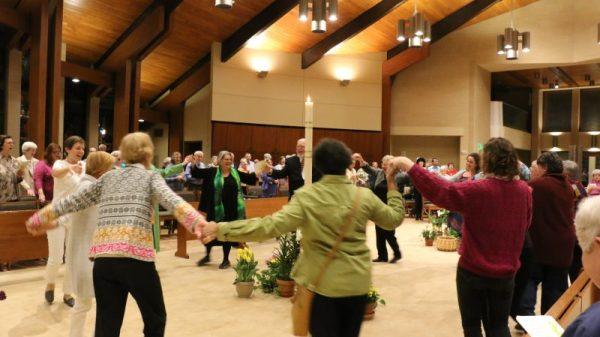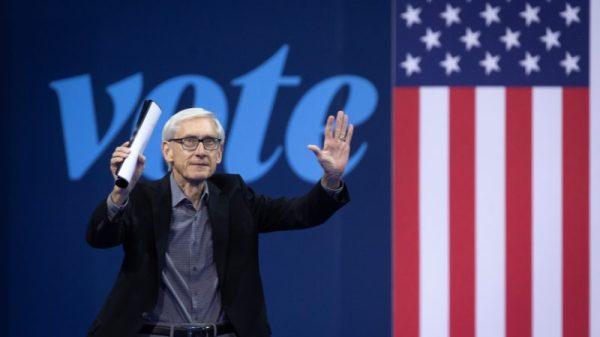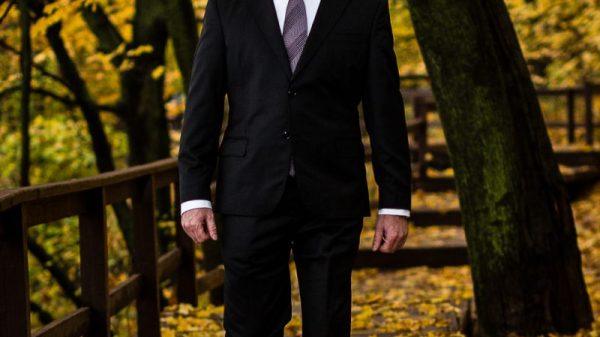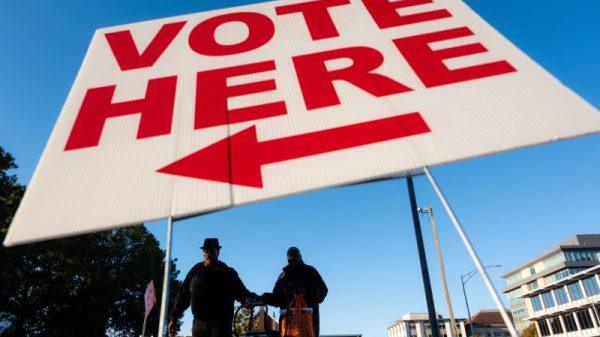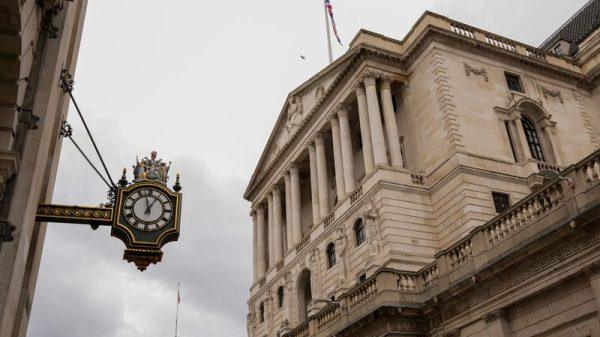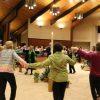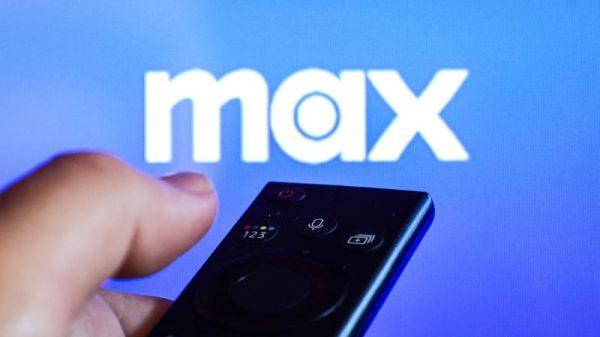In the latest earnings call, Aker Solutions ASA (ticker: AKSO), a global engineering company, announced a significant revenue increase of 35% in the third quarter, reaching NOK 13.2 billion.
This performance was underpinned by successful project executions and growth in the Renewables and Field Development segment. The company plans to distribute an extraordinary dividend of NOK 21 per share, reflecting its solid financial standing and commitment to shareholder returns.
Key Takeaways
Aker Solutions’ Q3 revenue rose to NOK 13.2 billion, a 35% increase from the same period last year.
The company’s EBITDA reached NOK 1.2 billion, with a margin of 9.2%.
An extraordinary dividend of NOK 21 per share has been proposed, with a total payout of about NOK 10 billion.
The Renewables and Field Development segment saw a 65% revenue increase year-on-year.
A strong tender pipeline and a secured backlog exceeding NOK 40 billion suggest robust future activity.
Company Outlook
Aker Solutions forecasts revenue growth of over 40% in 2024 with an EBITDA margin of around 7.5%.
The company expects to maintain a strong financial position with a net cash balance of NOK 11.7 billion.
Capital expenditures for the fiscal year 2024 are projected at NOK 1.5 billion.
Bearish Highlights
A negative cash outflow of NOK 1.2 billion was reported in Q3, though stability is expected in Q4.
Working capital is anticipated to normalize to negative NOK 4 billion to NOK 6 billion over time.
Bullish Highlights
The Renewables and Field Development segment’s revenue increased to NOK 9.2 billion, up 65% from the previous year.
Aker Solutions reported a net profit from equity accounted investees, mainly from a 20% stake in OneSubsea, at NOK 245 million.
The company confirmed a strong project backlog for 2025, anticipating sustained high activity levels.
Misses
The article does not mention any specific misses from the earnings call, suggesting that the company met or exceeded its targets for the quarter.
Q&A Highlights
CEO Kjetel Digre emphasized the importance of securing viable business cases and local licenses for renewable projects.
The HVDC topsides at Stord yard are expected to be completed and installed by 2025.
CFO Idar Eikrem discussed the company’s post-dividend payout financial health, highlighting a net cash positive position and available credit facilities of NOK 3 billion.
Aker Solutions’ robust third-quarter performance and strategic focus on renewables and field development have positioned the company for continued growth. With a strong backlog and a solid financial foundation, Aker Solutions is poised to capitalize on the increasing demand across the energy sector while delivering predictable project executions and attractive returns for its shareholders.
Full transcript – None (AKRTF) Q3 2024:
Preben Ørbeck: Good morning, and welcome to Aker Solutions Presentation of our Third Quarter Results. My name is Preben Ørbeck, and I am the Head of Investor Relations. With me today is our CEO, Kjetel Digre; and our CFO, Idar Eikrem. They will take you through the main developments of the quarter. After the presentation, we have time for questions. Those of you, who are following the webcast can submit your questions via the online platform. And with that, I leave the floor to Kjetel Digre.
Kjetel Digre: Thank you, Preben, and welcome to everyone tuning in. Let me start our presentation with the main messages for today. First and foremost, I’m happy to see that we continue to deliver on our financial targets. The third quarter revenue was NOK 13.2 billion, which is a 35% growth from the same period last year. Our EBITDA in the quarter was NOK 1.2 billion with a margin of 9.2%. The main driver behind the financial results is the solid operational performance across our project portfolio. And I would like to thank all our 11,700 colleagues for their valuable contribution. During the quarter, we have met several important milestones. Those include the successful anchoring of the Johan Castberg FPSO in the Barents Sea and connecting the Troll West platforms to power from shore. For the Aker BP (NYSE:BP) projects, we continue our solid progress in the alliance with high activity across locations, both in Norway and abroad. And last but not least, we announced yesterday that the Board will propose an extraordinary dividend of NOK 21 per share at an Extraordinary General Meeting to be held on the 22nd of November. The target is to pay out about NOK 10 billion to our shareholders in early December this year. This comes on top of our ordinary dividend policy, where we have already paid out about NOK 1.5 billion so far this year through dividends and share buybacks. It has been about 4 years since we merged Aker Solutions and Kvaerner, and I’m proud of the fact that we have delivered on our ambition and all the targets and that we continue to serve our investors through an attractive capital allocation strategy. This is a clear testament of the culture and the capabilities of the entire Aker Solutions organization. Next, I will take you through some of the operational highlights of the quarter, and let me start with Equinor’s Johan Castberg FPSO. Our engagement in the project started more than 10 years ago. Since then, more than 11,000 people have been involved in the project with important contributions from many Aker Solutions locations such as Fornebu, Stord, Sandnessjoen, Egersund, Verdal and Mumbai. With the floater securely anchored at site in the Barents Sea, we continue to support Equinor to ensure a safe start-up of production this winter. I would also like to add that completing such a challenging project would not have been possible without the strong cooperation between Aker Solutions, our client, Equinor, and our many large and small subcontractors and suppliers, both in Norway and abroad. Then moving on to the Aker BP portfolio, where construction activity is ramping up across our own and our partnering yards. Progress is according to plan and several important milestones have been met in this quarter. This includes the delivery of pile clusters from Dubai and the first roll-up of the 20,000 tonne Hugin A jacket at our yard in Verdal. At Stord, the first 2 sections of the Hugin A utility module were recently lifted onto the grillage. This marks the start of assembly for the largest of the topsides in the portfolio and in fact, the largest topside ever assembled at our yard at Stud. At this important phase, I’m very happy to see how the members of the alliance are stepping up together as one team to deliver these important projects on the Norwegian continental shelf. So let’s move over to life cycle and our electrification portfolio. At Troll West, the final module was successfully installed offshore in early September. Together with our client, Equinor, we flipped the switch, and the Troll B and Troll C platforms are now supplied by electrical power through a subsea cable from Kollsnes outside Bergen. When the whole project is completed, it will decrease CO2 emissions from the field by almost 0.5 million tonnes per year. This will contribute significantly to emission reduction targets in Norway. Another important modification project in Norway is the Ormen Lange Phase 3, which we are executing for Shell (LON:SHEL). The project was awarded back in 2020, and our scope is to integrate the wet gas subsea compression system with the Nyhamna onshore gas plant. The subsea compression system, which is delivered by OneSubsea will enable increased recovery from the Shell-operated Ormen Lange field. The gas from the field will be transported via underwater pipelines to the Nyhamna plant. At the heart of the Ormen Lange Phase 3 project is a 500-tonne module that has been fabricated at our yard in Egersund. The module will provide both power, cooling and HVAC for the offshore project. I think it’s also important to note that Aker Solutions has been present at Nyhamna for more than 20 years, and that this project is a clear testament to the close relationship between Shell, Aker Solutions and OneSubsea. Okay. Let’s continue with our international portfolio in life cycle, where we are seeing high activity in Brunei, Angola, Canada and the U.K. At the Hebron project in Canada, we recently completed both the heating stack replacement and produced water bypass projects for ExxonMobil (NYSE:XOM). Staying in Canada, we are working on 2 projects for Cenovus, namely the West White Rose and the SeaRose FPSO. And starting with the latter, the SeaRose FPSO recently left the yard in Belfast, where it has undergone modifications to extend its life on the White Rose field to 2038. As for the new West White Rose topside, it is currently located at the yard in Texas, and our team in Canada is preparing for the tow-out, hookup and commissioning phases of the project. Moving over to our operations in Brunei, where we recently completed the planned annual shutdown of several offshore assets. This is part of our long-term frame agreement with Brunei Shell Petroleum. In this contract, Aker Solutions is responsible for maintenance and modifications of more than 200 offshore assets in the region. Lastly, I wanted to touch upon our CCS portfolio. In September, a major milestone was met with the official opening of the Northern Lights CO2 storage terminal in Oygarden on the West Coast of Norway. The terminal is part of the Longship project and is the world’s first cross-border CO2 transportation and storage facility. Aker Solutions is also engaged in the 2 other Longship projects. We’re in the FEED phase of Celsius’ carbon capture and storage plants in Oslo, and we are in the final stages of executing for Heidelberg Cement’s capture plant at Brevik, working with our partner, SLB Capturi. Together, these 3 projects open a complete value chain for the decarbonization of European industries. And we are proud to be part of this groundbreaking effort using our 3 decades of experience within CCS to develop a new industry and to solve energy challenges for future generations. Now let’s talk a bit about the investments that we make. To safeguard execution of our large project portfolio, we are implementing new technologies and digital solutions. One example is the fully robotic production line at Verdal. Here, take a look. [Audio Video Presentation] Quite exciting. So the fully robotic production line at Verdal was officially opened in September. For this project, we work with Aker BP and local partners such as [indiscernible] SINTEF and NTNU. And together, we have accelerated the development and implementation of robotics and automization at the yard. And these are not just robots that look good on video. We are already seeing the benefits in the numbers. For instance, the production line increases the speed of welding by up to 7x and surface treatment by a factor of 13 compared to traditional manual operations. We also see improvements in quality and safety, all leading to enhanced capacity and shorter delivery times. Investments like these are not only vital to safeguard the execution of the existing project portfolio, they are also key elements in our strategy to improve competitiveness for the future. This takes me to our tender pipeline, which has increased to about NOK 82 billion at the end of third quarter. We continue to see good mix between traditional oil and gas projects, decarbonization efforts such as electrification and opportunities within renewables. When it comes to oil and gas, we are actively engaged in maturing concepts for the next wave of offshore developments, particularly in the North Sea and other harsh environments, where we have a solid track record. We’re also in the process of renegotiating long-term frame agreements on maintenance and modifications. Here, we see strong demand driven by ambitions to optimize production and new subsea fields extend lifetime and to decarbonize production. We are also seeing positive signs in renewables markets despite some projects sliding to the right. One example is the Norfolk project, which did not obtain a CfD in the latest U.K. round, but where our engagement with the client continues to mature the development for the next licensing rounds coming up in 2025. For CCS and hydrogen, we are seeing increased interest in our capabilities outside Norway. We have recently won several early phase awards such as the FEED study for Ocior’s green ammonia plant in India and the feasibility study for Battelle’s Atlantic Carbon Hub in the U.S. A key element in our strategy is to position earlier with key clients through our energy consultancy called Entr. And I’m very happy to report continued strong growth in this entity. So far this year, we have been engaged in more than 250 studies across market verticals and geographical regions. In doing so, we are both supporting our clients in bringing new projects to the market and positioning Aker Solutions for future opportunities. This takes me to the general outlook for Aker Solutions. Firstly, we have a solid order backlog of projects with balanced risk reward profiles. Our key focus is to continue delivering predictable project execution. Secondly, our market outlook remains positive despite volatile energy prices and geopolitical instability. Our capabilities and services are in high demand, and we are working on several tender opportunities that we expect to come to conclusion over the next 6 months to 18 months. Lastly, we have a very solid financial position, enabling us to both develop the company and deliver attractive returns to our shareholders. And with that, I hand the word over to Idar, who will take you through the numbers in more detail. Thank you.
Idar Eikrem: Thank you, Kjetel. I will now take you through the key financial highlights of the quarter, our segment performance and run through our financial guidance. As always, all numbers mentioned are in Norwegian kroner. So let me start with the income statement. The third quarter revenue was NOK 13.2 billion, up from NOK 9.1 billion a year ago. This represents about 45% growth year-on-year. The underlying EBITDA in the quarter was NOK 1.2 billion, up from NOK 214 million a year ago, with a margin of 9.2%. Both Life Cycle and Renewables and Field Development have reported significant improvement in margin levels compared to the same period last year. In addition, net profit from our equity accounted investees, mainly from our 20% ownership in OneSubsea contributed with NOK 245 million in the quarter. The underlying EBIT was NOK 904 million, up from NOK 59 million a year ago, with a margin of 6.9%. Net financial items were negatively affected by the developments in the SLB share price and associated exchange rates in the period. The net income, excluding special items, was NOK 812 million, down from NOK 1 billion a year ago. And lastly, earnings per share were NOK 1.70, down from NOK 2.18 a year ago. Moving over to our segment performance. For Renewables and Field Development, the third quarter revenue increased to NOK 9.2 billion, up from NOK 5.6 billion in the same period last year, representing a year-on-year growth of about 65%. The underlying EBITDA in the quarter was NOK 774 million, up from NOK 239 million a year ago and with a margin of 8.4%. This is the result of a strong execution across our portfolio, meeting critical milestones to deliver on time, quality and cost. However, the legacy renewable portfolio continues to be a drag on our margins. The secured backlog remains high at more than NOK 40 billion. Based on the secured revenues and backlog, we expect the revenue in this segment to increase by more than 65% in 2024. For the Life Cycle segment, revenues in the third quarter was NOK 3.5 billion, up from NOK 3.2 billion in the same period last year. The underlying EBITDA was NOK 244 million in the quarter, up from NOK 163 million last year, representing a margin of 7.1%. This was enabled by continued solid performance on ongoing projects and long-term frame agreements. The order intake in the quarter was NOK 2.7 billion, representing a book-to-bill of about 0.8x. The secured backlog at the end of the quarter was NOK 23.2 billion, providing a good visibility for future activity levels. Based on the secured revenues and backlog, we expect the Life Cycle segment to continue close to the 2023 levels also in 2024. In early October last year, we celebrated the final close of the Subsea transaction, merging Aker Solutions Subsea business with SLB to create OneSubsea. 12 months later, we are happy to see that the company is getting off to a flying start. In the third quarter, the company reported revenues of NOK 10.7 billion with an EBITDA margin of 18%. If we look at the last 4 quarters, the company has delivered revenues of more than NOK 40 billion with an EBITDA margin just below 20%. Going forward, the company has announced annual synergy targets of around $100 million over time. Net income for the entity was about NOK 1.1 billion before PP&A adjustments. After these adjustments, Aker Solutions recognized NOK 244 million for our 20% share. These figures, however, included a NOK 43 million catch-up effect from our second quarter reporting, as actual performance was better than forecasted. During the third quarter, the company has paid back in full all outstanding vendor note and the working capital loans to Aker Solutions. The company has a strong net cash position and has decided to pay out quarterly dividend of about $35 million to its shareholders in the fourth quarter of this year. For Aker Solutions, this means a dividend of approximately NOK 75 million. As a long-term shareholder and strategic partner, we are very happy to see that the underlying performance of OneSubsea and we continue — and we expect the company to continue its positive development in the years to come. This brings me to the cash flow development in the quarter. Operational cash flow in the period was negative NOK 519 million, mainly driven by working capital — working capital reversal of about NOK 1.2 billion. CapEx was NOK 254 million, in line with our guiding. During the quarter, we received the remaining cash proceeds from OneSubsea of about NOK 1.3 billion. Lastly, we saw a slight positive impact from exchange rate adjustments in the period. Moving to our financial position. As mentioned, the working capital started to normalize in the quarter with a net outflow of NOK 1.2 billion. Short term, we expect working capital to remain relatively stable, but over time, normalized towards a range between negative NOK 4 billion and negative NOK 6 billion. CapEx in the period was, as mentioned, NOK 254 million, down from previous quarters, as we finalized our safeguarding investment program. These investments such as the Verdal production line are critical for safeguarding the delivery of our backlog, but will also contribute to competitiveness going forward. Our financial position remains highly robust with a net cash position of NOK 11.7 billion, including investment in liquid funds. This takes me to the capital allocation section of today’s presentation. Since the merger between Aker Solutions and Kvaerner in 2020, a key priority has built to — has been to build financial robustness, while investing resources into profitable growth initiatives such as digitalization and robotization. With yesterday announcement of an extraordinary dividend, we will return about NOK 10 billion to our shareholders in the fourth quarter. This comes on top of the ordinary dividend, where we, in the first half of the year, distributed about NOK 1.5 billion through dividends and share buybacks. Aker Solutions will maintain a healthy financial position also after the dividend payment, enabling us to both develop the company and deliver attractive returns to shareholders over time. We set off a journey in the summer of 2020, setting ambitious targets for growth, margin expansion and cash generation. 4 years into this plan, I’m very happy to see that we have exceeded our financial targets. So to sum up, in the third quarter, we continued to deliver strong financial and operational performance. Based on our secured backlog and market activity, 2024 revenues is expected to grow by more than 40% compared to 2023. The EBITDA margin is expected to be around 7.5% for the full year of 2024. In addition, OneSubsea will contribute to our financial performance through our 20% ownership. As mentioned, working capital is expected to remain relatively stable short term, but normalize over time to a level of between negative NOK 4 billion and NOK 6 billion. The CapEx in the full year of 2024 will be around NOK 1.5 billion. Over time, we expect CapEx to be around 1.5% of revenues. And last but not least, with the announcement of the extraordinary dividend, Aker Solutions will have distributed more than NOK 11.5 billion to its shareholders in 2024. Thank you for listening. That was the end of the presentation. In a few moments, we will open up for questions.
A – Preben Ørbeck: Welcome, everyone, to the Q&A session of today’s presentation. We will start with a question from Kate O’Sullivan in Citi. On the extraordinary dividend, what was the driver behind declaring such a significant one-off cash dividend above your existing distribution framework? And going forward on your capital framework, should we explain that — expect excess cash to be distributed to shareholders over other investment opportunities?
Idar Eikrem: Thank you, Kate, for the question. The topic of capital allocation had been on our agenda for quite some time. And as you know, many of you have asked questions quarter after quarters, and — we have been in contact with our shareholders. A majority of the shareholders would like to see an extraordinary dividend. And now in the third quarter, we have concluded on that one. So the Board will propose to pay out an extraordinary dividend. It has been part of the framework on top of our ordinary dividend policy. And the ordinary dividend policy will be maintained. And going forward, you should expect ordinary dividend in line with our policy. When it comes to other investment opportunities, we have still a strong balance sheet after the dividend distribution and would be able to also grab any interesting opportunities. But as you know, our capital discipline is top of our agenda. And therefore, any business case needs to pass our hurdle in order to do that.
Preben Ørbeck: Thank you, Idar. I will move on to a question from Victoria McCulloch in RBC. A few questions, but we start with the first one on the Aker BP projects and whether we are recognizing profit on all the projects at the moment?
Idar Eikrem: Currently, we have 3 of the project, and there is 4 on the new build and field development business segment. And 2 large ones and 2 smaller ones. The 2 large ones, we have start profit recognition this year and one of the smaller one at the end of last year. So there is only one left and that will come in fourth quarter.
Preben Ørbeck: Maybe continuing on from Victoria on the balance sheet, if you can talk a bit about how you view the balance sheet and also a question on if you still expect the working capital outflow in the second half of the year.
Idar Eikrem: Yes. Updated forecast on the working capital indicate that we still expect, of course, a reversal of the working capital over time. And our guidance have been that we should be in a negative NOK 4 billion to NOK 6 billion over time. But — and we saw in this quarter that we had a negative outflow of NOK 1.2 billion. We expect a bit stable throughout the fourth quarter, and then, you will see some of the remaining reversal coming in over the next couple of years.
Preben Ørbeck: Shifting over to a question from Lukas Daul in Arctic. What is driving the NOK 20 billion increase in the tender pipeline? And if you can elaborate a bit on the type of projects?
Kjetel Digre: Yes. No, it’s coming in all segments really. And starting with the oil and gas, we see an increase in the European, Norwegian greenfield segment and even more so in the brownfield segment. There, we have important frame agreements that will then come up for renewal next year. And we have a large electrification portfolio. And in addition, the subsea sort of tieback opportunities are picking up. We are a partner to OneSubsea on utilizing our yards to the subsea scope. But we also then obviously are well positioned to take on the brownfield scope of modifying the host platforms. And then, renewables are moving. We have a lot of tendering activity in the offshore wind space, in the CCS space and also hydrogen. The Entr portfolio, which is our consulting business, had 250 studies, all of which might materialize into new opportunities. So it’s a good spread and a lot of activity, I would say.
Preben Ørbeck: Thank you, Kjetel. Moving on to 2 questions from [Kate Somerville] on the guidance. Given that the revenues in hand imply around more than 40% revenue growth, why is your guidance only for plus 40%. And also include the question on the margin, which is expected around 9% of the year and what do you expect in the fourth quarter, Idar?
Idar Eikrem: Yes. Thank you. I’ll start with the revenue first. I think your math is quite correct there. More than 40% is what we have said, and we don’t expect that should be — it’s a range between 40% and 45% and 43% is in our midpoint, and that you will get out of this. So we don’t expect a drop in revenue in the fourth quarter, so more in line with the guidance that more than 40%. And as you know, we have a tendency to be somewhat careful on our guidance. When it comes to the margins, it’s important to remember that our margins consist of our underlying portfolio plus the impact of the OneSubsea JV, which is equity accounted in our business and will come in as a one line consolidation impacting EBITDA. So the underlying business is a margin of around 7.5% and then you get the effect of OneSubsea on top. If we would have a pro rata consolidation, you would have seen larger EBITDA numbers because, as you know, the OneSubsea is a company that is generating around $4 billion, NOK 40 billion annually in revenues and have a healthy margin of close to 20%. So then our margin would have been higher. But the way we report is based on the equity accounting, so. Thank you.
Preben Ørbeck: Thank you, Idar. Moving on to a question from Haakon Amundsen in ABG. Two questions, 2-parter. The first one, you have a strong backlog for 2025. Can you give some color on the expected activity? Should we expect a flat year, was the question that we can start with that, Idar.
Idar Eikrem: Yes. I think when it comes to the sort of formal guidance for next year, we will come back to that. But we are now at a high activity level, and we expect, of course, that both the year that we are about are into now in the fourth quarter and next year will be 2 years with high activity due to the backlog that we have. And happy to come back in the fourth quarter with a more precise guidance on this one.
Preben Ørbeck: Moving on to the second question from Haakon, which is on the dividend from OneSubsea was moderate relative to net profit level. What payable ratio should we expect going forward?
Idar Eikrem: Yes. I think this is — you should read this just as a signal that they are now built up their cash position and have sufficient capital to fund their working capital. And as we have communicated, all the shareholder loans and working capital loans that we provided to them, including the vendor note was paid out to us in the quarter. We received NOK 1.3 billion. And you should read this as a first step in the dividend going forward, and it’s a dividend basically paying out on a quarterly basis.
Preben Ørbeck: Moving on to a question from [Russell in Upstream]. There’s been a lot of attention on FPSO refurbishment in Norway being over budget and schedule. Are we targeting any new FPSO refurbishment? And are we expecting to land the Wisting projects.
Kjetel Digre: Well, first of all, the — on the refurbishment, the redeployment of FPSOs is an area, where we have a clear role. Currently, we are involved in the last phase of the Var Energi project in Norway. And we have a partnering setup with Drydocks World in Dubai, where we are looking for more projects like the Rosebank project that we are currently executing. So the answer is yes, we have a clear role there, and we are looking for new opportunities. Wisting is a huge undertaking. That’s mainly Equinor and license partners that are working on maturing a possible business case to sanction. We are involved in studying that. And the main message from us and me on this thing is that we are eager to be involved with the different capacities and capabilities we have, starting with engineering, but then also potentially look for some more physical work onshore, inshore Norway before it goes out in the Barents Sea.
Preben Ørbeck: Next, a question from Victoria McCulloch on the Norfolk. If you can give us an idea of the time line for execution, both in terms of yard, engineering and offshore installation.
Kjetel Digre: Yes. They didn’t get the right result in the CfD round now, but that was really a different kind of round. They are looking at the next one, next licensing round. And we have our projects going. The first platform has — is currently starting to build in Dubai. It’s on track, a good collaboration with our client, RWE. And on the engineering, we are in a very good place. This is a portfolio of standardized platforms, where we are looking for the full scoping effect, and we see that through our engineering, which is a clear statement when it comes to how to become a partner to be able to lift these business cases with our clients, but also how to be competitive from a Norwegian standpoint with our company. So all in all, we are not slacking off. We are steaming ahead on those projects.
Preben Ørbeck: Moving to a question from Kim Uggedal in SEB. If you can give a ballpark figure on where you are in terms of completion on the Aker BP or Yggdrasil projects and whether they should read anything into the extraordinary dividend that you are post the most critical phases?
Idar Eikrem: Yes. Thank you, Kim. On the Aker BP portfolio, as I mentioned earlier, on 3 out of the 4 projects, we have started profit recognition. And as you know, we have an internal policy that we normally don’t start profit recognition before we have more than 20% progress. So that is applicable also for this portfolio, and we have passed 20% on all of this. And as mentioned, on track and as planned. So — and if you take average, we are closer to 1/3.
Preben Ørbeck: Question again on capital this time from Christopher Mollerlokken. With regards to the extraordinary dividend, what would you say would be a comfortable cash position for Aker Solutions going forward? Do you still want to have a strong balance sheet and continue to have significant order — as you have a significant order book to deliver?
Idar Eikrem: Yes. Our balance sheet after payment of the extraordinary dividend will still be strong, and we will still be based on the cash generation that we are going to produce in a net cash position, and that is our target to have a robust balance sheet also going forward.
Preben Ørbeck: Another question from Christopher Mollerlokken. With regards to new production line at Aker Verdal, will that be used immediately on existing projects? Or is it more relevant for projects you are tendering?
Kjetel Digre: Well, first of all, we have worked now the last couple of years with upgrading all our yards. Verdal production line is part of that. And that’s all to do with being able to execute a large portfolio of projects in a safe and competitive way. So all of this is actually fundamental to execute the portfolio now and the Verdal production line is already producing for the — both the Aker BP projects and others.
Preben Ørbeck: Maybe a new question comes from Mick Pickup in Barclays on the renewables. He writes that renewables seems pregnant with prospects. What is needed to move them forward?
Kjetel Digre: Well, I think they are the — having a business case sanctioning it is on the operator and owner side and the licenses around these different opportunities. And I know that they are working hard on that. From our side, I would say that we have at least sort of 2 clear roles. One is to be a partner in this early phase to find out the best possible concepts and the way of thinking in the local settings, where different regulations might exist. So that’s through our Entr consultancy business. The second big topic, which we are working intensely on is to actually improve our productivity and competitiveness. That’s obviously to make sure that we are at a sort of sustainable attractive level when it comes to our profitability, but perhaps even more so to lower the threshold for being able to sanction projects in these new energy verticals. So — and then we see them coming. This — it is happening, and it has to happen, and we are there to support and execute.
Preben Ørbeck: Maybe then following up a question from Daniel Thomson. If you could talk a bit about the legacy renewables projects and how much are they weighing down on margins? And when are they expected to be completed?
Kjetel Digre: Well, if I start, Idar, just on where those projects are. The 2 clearest ones are the HVDC topsides at Stord yard. They are in a very good place now. Stord is a good place to take care of these huge kind of projects and the products that comes out of this is also very good. Currently, we are looking at finalizing everything with equipment and testing and then they will be shipped to their final locations and installed during 2025.
Preben Ørbeck: Yes. A question here from [Rafael Dubois] on the definition of a strong balance sheet. And also, if you can take in how do you view that in terms of the working capital normalization expected going forward? Yes.
Idar Eikrem: We will — and as I said, we will — after the payout of the — after NOK 21 per share, the NOK 10 billion in dividend, we will still maintain a strong balance sheet. If you take the SLB shares that is sitting on our balance sheet and the book value of OneSubsea as — and combine those, the value of those are more in the NOK 10 billion range. And in addition, we have the working capital, as you mentioned, and the reversal of the working capital. We have facilities in place in order to also to take care of any sort of negative variation on that one with facilities in place. As you know, we have both RCF facility of — revolver facility of NOK 3 billion, and we have other facilities as well if needed. But all in all, as I said before, we are maintaining this to be a net cash positive balance sheet also going forward.
Preben Ørbeck: I think that was all that we had time for today. I would like to thank everyone for tuning in. And from all of us here, I wish you a good day and also a happy Halloween. Thank you.
Kjetel Digre: Thank you.
Idar Eikrem: Thank you.
This article was generated with the support of AI and reviewed by an editor. For more information see our T&C.

